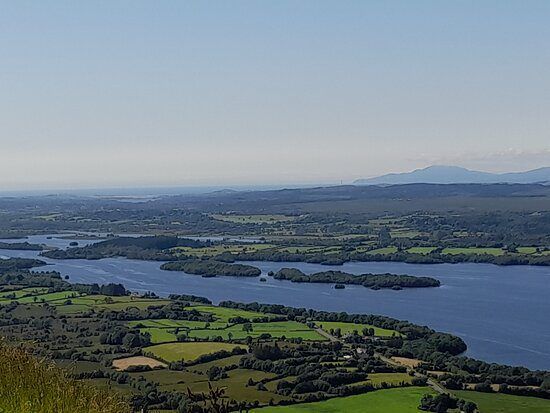-
Visitor Information Centre 028 6632 3110 (UK & NI) +44 28 6632 3100 (ROI)


BLOG

Streetscape Art Project
The Streetscape Art Project was created to celebrate the local history of Enniskillen and do this in an attractive way to the Streetscape. Enniskillen BID worked alongside the incredibly talented artist Eleanor Wheeler on this project. The Streetscape Art Project not only looks great around Enniskillen but also encourages footfall and tourism for local businesses in Fermanagh.
The Tactile Map, located at the Diamond Enniskillen, shows the locations of the 22 panels around Enniskillen. The panels incorporate key plantation buildings from the formation of the Island Town. The Tactile Map also provides a great visual Streetscape located in the centre of the town.


FAIR GREEN
The Panels each have a unique drawing related to the area it is located. This is shown in the Fair Green photo, the illustration includes one man and two horses.
GASWORKS
Then follows the Gasworks panel, inspired by the Enniskillen Gasworks Company. The Gasworks company first provided gas for street lighting in 1849. This event was marked by a ceremony at the East Bridge where the first lamp was lit. Prior to this there were no street lights in Enniskillen.
GAOL STREET
Gaol street now named Belmore Street, was formerly commons land. Gaol Street developed as the town grew beyond the East Bridge in the early 19th century. The Gaol designed by Richard Morrison and built in 1812-15 was in use until 1901.
DRAW BRIDGE
Enniskillen being an island town has many bridges. East Bridge was formerly the Draw Bridge. The first bridge dates to circa 1614; replaced in 1688 with a stone-arch bridge forming the core of the present bridge; widened in 1823 and 1892. The former end house, now demolished was once the post office & later lived in by Richard Hurles, a famous cutler for European Royalty.

INIS CEITHLEANN
The tradition is that Enniskillen was named for the tiny islet InisCethlenn and was believed by Lord Viscount Cole who had the retaining wall built around it . His ancestor William Cole, founder of the town is said to have planted a whitethorn bush and according to legend, if the tree died, the Cole family would also move from Enniskillen. After WWI the tree died at the time when the Cole family were selling their interests in the town. There are now no family members in Enniskillen or Florencecourt.
REGAL PASS
Regal pass or Entry at one time provided access to the water for steamboats such as the “Wide Awake”.

WHITE HART PLACE
Formerly named for the Old White Hart Inn and where the Royal mail coach left for Dublin , Drogheda and Bundoran in the late 1800s.
PADGETS LANE
Possibly named for an affiliation between the English House of Paget and the Coles of Florencecourt. Location of pig markets and the Linen Hall, attached to the shambles (abatoir) built by JH Frith in 1825.
PUDDING LANE
Eden St formerly called Pudding Lane as it was the site of slaughter houses in the early 19th century.
WATER LANE
Once thriving residential and commercial street and most direct route to the waters edge for transport of goods by boat. The panel depicts an Erne Cot, a flat bottomed boat used for transporting goods, A traditional clinker boat and a sailing dingy.
BOSTON
This markets area as a whole was known as Boston.



SCHOOL HOUSE LANE
The First Royal School was located in School House Lane, now Market St.
BANK LANE
Bank Lane runs to Wellington Place. Formed around 1830 and taking its name from the Provincial bank located at the top of the lane, it is of course more widely known as “Peggy the Bulls”. It is said to relate to an old woman called Peggy who sold ‘Bulls Eyes’ from a confectionery stall located at the top of the lane.
PREACHING LANE

Now Wesley Street and formerly Hospital Lane. The early County Hospital (1767) was located on the present site of the Ulster Bank and the Wesleyan Methodist Chapel was built on the site opposite in 1792 when it became Preaching Lane.
DARDANELLES
Dardanelles was the local name given to the area where many young men left to serve in the WWI Dardanelles campaign between 1915-16. They left from Enniskillen by railway to be transported to the UK and from there to Turkey. Many would not return.
BARRACKS STREET
Queen Street, formerly Barracks Street or Brewery Lane and into Ann Street. The Queen’s Stones on either side of the road at the upper end of the street remain. The stone on the right-hand side still has a partial metal loop through which cordons were passed to section off the road for military parades and the like. At one time Queen Street was a thriving area, thriving commercially and indeed socially. Located at the bottom of Queen Street was the Militia Barracks, more recently Militia Hall.
BREWERY LANE
Established in the latter part of nineteenth century; acquired by W & J Downes in 1877. Mineral water production was added in 1887. Premises covered about an acre of land, The company produced: lemonade, ginger ale, ginger beer, champagne cider, soda water, lemon soda, lithia water. The brewery produced ales and porter. Downes saw considerable success both as a brewery and as a manufacturer of mineral waters up until the early mid twentieth century.
The map below provides a walking trail around Enniskillen to view the Streetscape Art Project. There are more panels to be found along the way.

Artist: Eleanor Wheeler
“I hope the panels will be seen as an asset to the town, in terms of celebrating local history and be an attractive addition to the Streetscape. Hopefully, the project will encourage more footfall for local businesses by providing tourists with walking trails around the town of Enniskillen.”